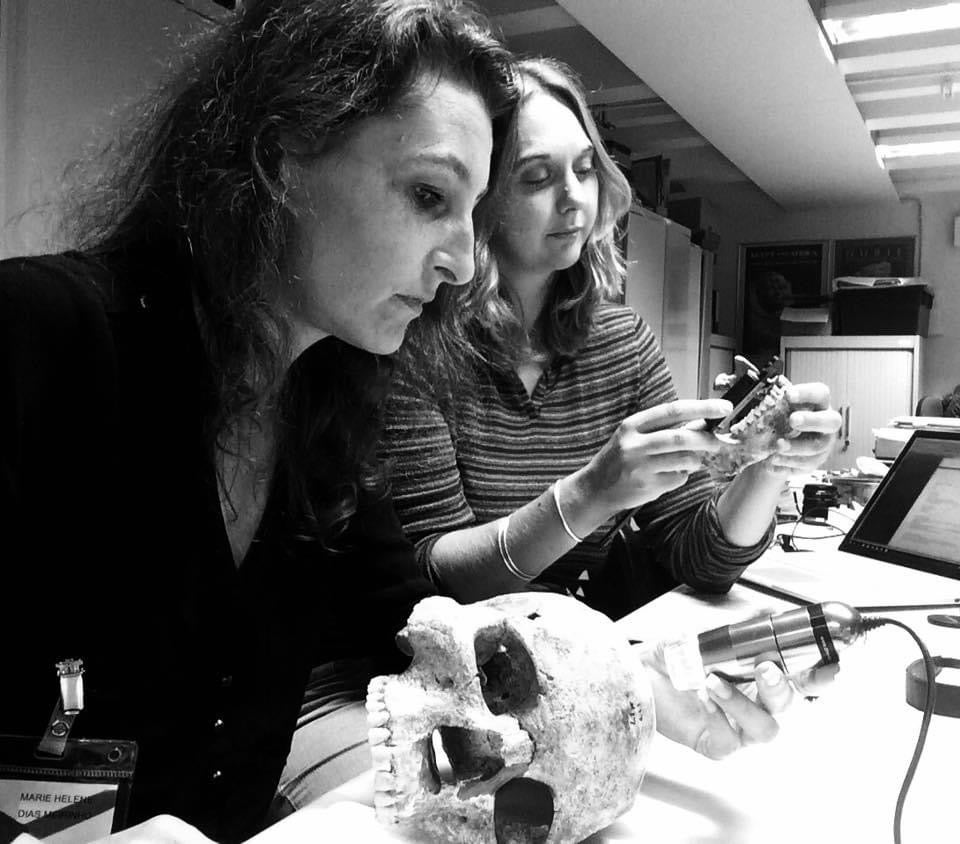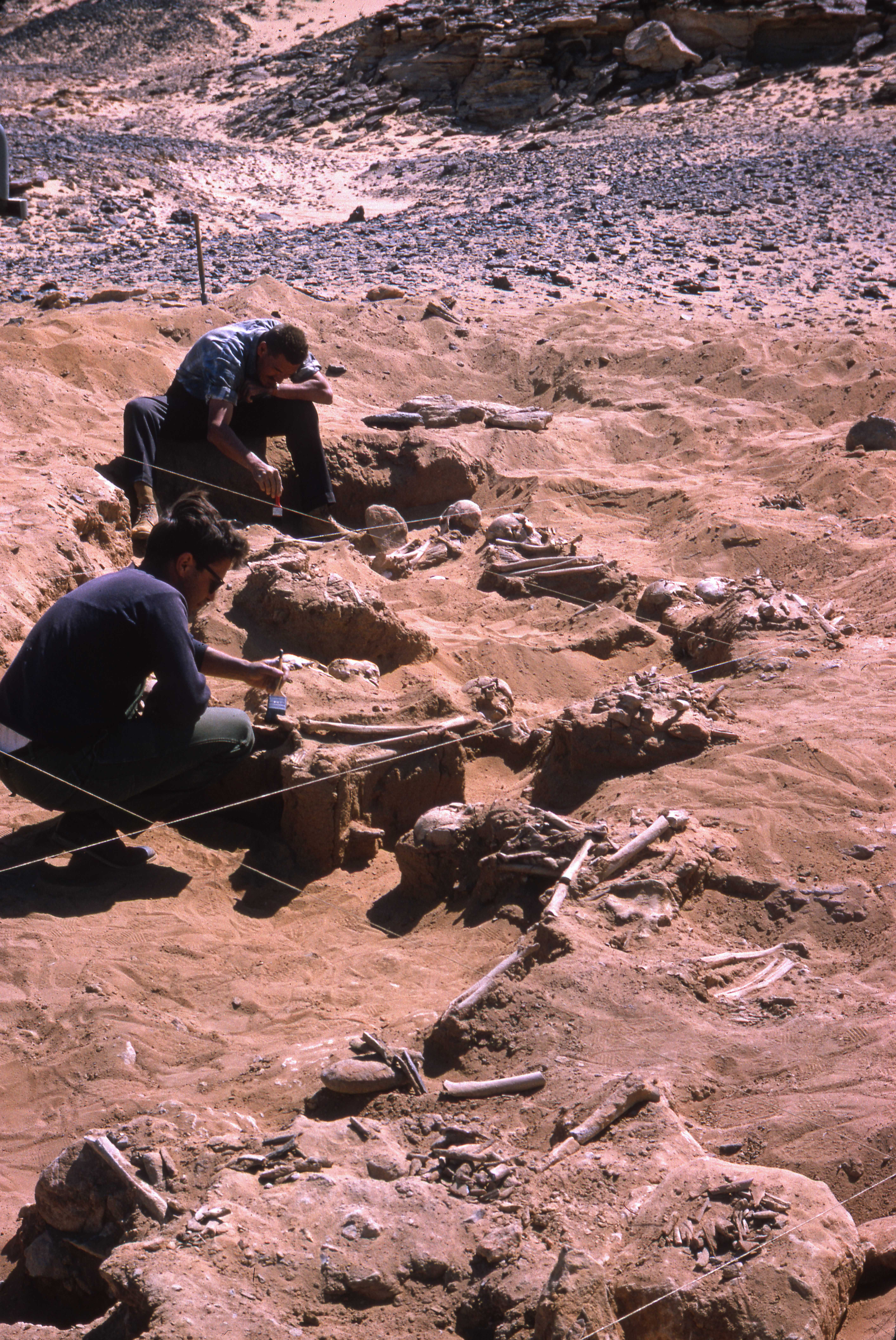Investigating the Stone Age origins of violent raids
Archaeology correspondent David Keys reports on a scientific investigation that unmasks a prehistoric nightmare

New archaeological research has shed fresh light on the extremely violent nature of Stone Age warfare.
A detailed analysis of conflict wounds sustained by members of a small community living in the Nile Valley almost 20,000 years ago has revealed that prehistoric warriors attacked populations indiscriminately, injuring and killing women and children with the same high frequency that they slaughtered adult males.
The only difference was that they usually appear to have killed children with clubs at close quarters – rather than solely using arrows and spears.
The picture emerging from the study – carried out by the British Museum and the French National Centre for Scientific Research – demonstrates, for the first time, the indiscriminate brutality of at least some Stone Age warfare.
The analysis reveals that, as far as the population studied is concerned, large pitched battles did not tend to occur. Instead, there seem to have been very frequent small-scale events in which family groups were attacked, sometimes with extraordinary ferocity and levels of violence far in excess of that needed to merely kill people.
Several victims had between 10 and 20 unhealed arrow or spear injuries – and had each been subjected to at least one frenzied attack.

One woman had, for instance, 19 unhealed arrow or spear injuries to her hip, upper legs, upper arm, shoulder and head.
Another individual – a male – had serious unhealed injuries to his lower jaw, upper legs, upper arm and forearm.
In eight cases, the scientists found fragments of flint arrowheads still embedded in victims’ bones – and in 28 cases, they found flint arrowhead or spearhead material inside victims, but not embedded in their bones (thus suggesting a high frequency of injuries to flesh and organs). In seven individuals, more than five examples of such flint projectile material were discovered inside each of their body cavities.
In an exhaustive study over the past eight years, the scientists used microscopes to examine, in great detail, 61 individuals, from a prehistoric cemetery site called Jebel Sahaba in northern Sudan, originally excavated in the 1960s.
Of those 61 people, 41 per cent had suffered arrow or spear injuries to their remaining bones. A further 21 per cent had been injured or killed with clubs or other blunt weapons
In most cases, almost half of their visible impact wounds had healed, suggesting that those individuals had been attacked on multiple occasions – on average, perhaps several times per year.
The arrow and spear impact marks almost certainly represent only a small fraction of the total number of attacks suffered by victims because about a third of each individual’s bones could not be examined – they had not survived – and because many combat injuries would have been to flesh and organs rather than to bones (and were therefore largely undetectable). Many totally healed impacts were also undetectable.
Violence was inflicted on families indiscriminately. At least half of the 15 children in the cemetery had visible evidence of having been attacked, often multiple times.
At least 19 out of the 43 adults in the Jebel Sahaba cemetery had also been attacked with spears or arrows – often on multiple occasions. And a further 11 had been injured or killed with hand-held blunt weapons. The only group comparatively absent from the cemetery were teenagers.
In terms of gender, men and women seem to have been attacked by the group’s enemies with equal frequency and ferocity.
Except in the case of children (who were often killed with blunt weapons – presumably stone hammers or bone or wooden clubs), most attacks were carried out from a distance – through the use of spears and bows and arrows.

It appears that arrows predominated because, where direct (rather than oblique) impacts on bone occurred, penetration was often substantial (sometimes several centimetres, suggesting very high velocity impacts).
Certainly, the bow and arrow had already been in use in Africa for about 50,000 years – and had also been employed in Asia for more than 20,000 years.
The arrows and spears used to carry out the Nile Valley attacks were very sophisticated – and designed to cause the maximum amount of blood loss.
It may be that the levels of violence at Jebel Sahaba were particularly high because climatic changes at the time would have led to substantially increased competition between different communities.
The Nile Valley hinterland was becoming much more arid, reducing wild game availability – and Nile water levels were becoming much more erratic, with occasional major floods destroying virtually all local vegetation.
Dr Daniel Antoine, acting keeper of the Department of Egypt and Sudan, and curator of Bioarchaeology at the British Museum, said: "Jebel Sahaba has now been shown to be the oldest cemetery in the Nile valley and one of the earliest sites displaying extensive interpersonal violence in the world. Competition for resources due to a shift in the climate was most probably responsible for these frequent conflicts."
Dr Isabelle Crevecoeur, of the French National Centre for Scientific Research and lead researcher on the project, said: "Healed and unhealed lesions, caused by arrows, spears and other weapons, were found on over two-thirds of the 61 individuals buried at the site, regardless of their age or sex, including young children."
Although the most detailed study of the victims has been carried out over the past few years (and is only being published today), none of the scientific work would have been possible without the original excavations of the site, commissioned by Unesco in advance of the construction of Egypt’s Aswan High Dam and the subsequent inundation of the site by Lake Nasser in the 1960s. Today, the site of the Stone Age cemetery is inaccessible – because it lies at the bottom of that vast lake.
The precise date of the Jebel Sahaba cemetery is not known, but tests show that the skeletons were buried there between 13,400 years ago and 20,000 years ago, and probably during the older part of that date range. However, the cemetery itself appears to have been in use for only two or three generations.
The new research is important because it reveals the unexpectedly very high levels of violence that could erupt, in at least some circumstances, in the Stone Age.
It suggests that there may have been no rules or traditions or taboos governing conflict between communities – and that in turn suggests that there may have been no ethical values in existence, at least as far as the treatment of members of other communities was concerned.
The amount of excess violence (that is, over and above that needed to kill somebody) also gives insights into the degree of animosity felt by communities against other people – and the brutal slaughter of children suggests that the attackers wanted to obliterate a community rather than merely defeating it.
The new research into the Jebel Sahaba skeletons is being published today in the science journal Scientific Reports.
Join our commenting forum
Join thought-provoking conversations, follow other Independent readers and see their replies
Comments
Bookmark popover
Removed from bookmarks